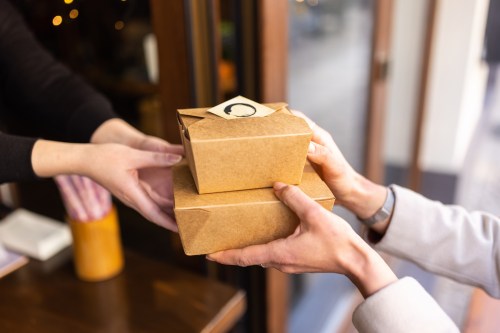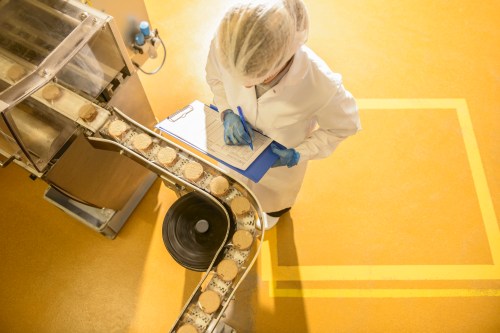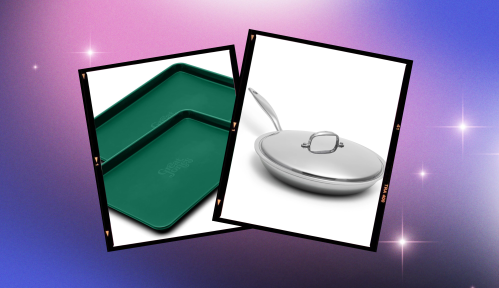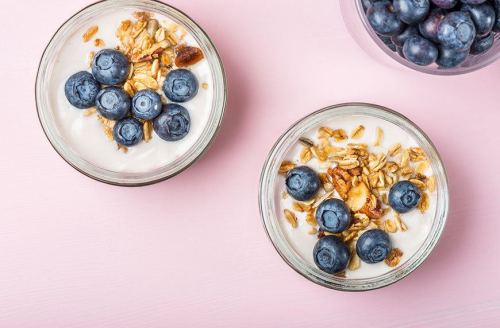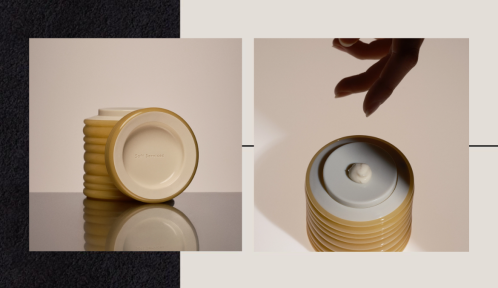Thinking about ordering takeout or packing up leftovers from your favorite restaurant? It's a genius move—no cooking, no cleanup, and you get awesome food served right to your plate (or let's be honest, straight from the container is cool, too). But, are you handling your takeout safely? You might be thinking: "What could possibly go wrong with leftover pizza?," yet there's more to keeping takeout fresh and safe than simply opening the box and digging in.
Experts in This Article
infection preventionist and adjunct associate professor at Case Western Reserve University
director of the Alliance to Stop Foodborne Illness
registered dietitian based in California
Believe it or not, many of us overlook some sneaky food safety rules when enjoying leftovers from our favorite restaurants. And neglecting them might mean risking more than a sauce spill on your favorite sweatpants. Worst case? You could end up with an unwelcome side order of food poisoning.
But fear not: We asked experts to share the top food safety rules you might be missing, and what to do instead to keep your takeout game on point—aka safe, delicious, and hopefully stomachache-free.
Rule #1: Leaving your food out too long
We’ve all been there. You pick up takeout, come home, and get distracted by scrolling social media or catching up on your favorite show. But did you know that perishable food shouldn’t sit out for more than two hours?
One rule people sometimes break with takeout is leaving it unrefrigerated for too long. “Do not leave cooked food, including takeout or leftovers, unrefrigerated for more than two hours,” says Vanessa Coffman, PhD, the director of the Alliance to Stop Foodborne Illness. “In this time and at this temperature called the "danger zone" (between 40°F and 140°F), bacteria like E. coli and salmonella multiply rapidly. If cooked food has been left out for more than two hours (or one hour above 90°F), it’s safest to discard it,” Dr. Coffman adds.
An extra point of caution: Some food-loving bacterias, like Bacillus cereus—which thrives in cooked grains, rice, and powdered cheese products that have been improperly stored after cooking—produce toxins that can survive the reheating process, no matter how hot you get your food.1
What to do instead
Make food safety your priority. “Next time you go out to eat and have leftovers, consider bringing a cooler if you know you won't be able to refrigerate the item within 2 hours, says Sara Cardenas, MPH, RD, a registered dietitian based in California.
If you can’t eat your food right away, store it in the fridge or a cooler with ice packs during transit. So yes, this means moving off the couch for a few minutes to properly stow away your leftovers.
Rule #2: Not reheating food properly
Microwaves are magical inventions, but they’re also infamous for unevenly reheating food. If some bites are scalding hot while others are still fridge-cold, you’re not effectively killing off bacteria that might be lingering on certain foods. This is especially important for things like meats and starches, which are prime candidates for harboring bacteria that could make you sick.2
What to do instead
Make sure to stir or rotate your food while microwaving or heating it on the stovetop, so all parts of your meal heat evenly. “If you reheat your takeout or leftovers, make sure it reaches a minimum internal temperature of 165°F or until hot and steaming,” per Dr. Coffman.
Rule #3: Waiting too long to eat your leftovers
I know, it’s tempting to think leftover pizza can age like a fine wine, but trust me, it doesn’t improve with *too much* time. Leftovers have a shelf life that is important to keep track of. “Make sure that leftover takeout is eaten within 3 to 4 days,” says Dr. Coffman. “Bacteria can continue to grow in food over time, even in the fridge. By day four, harmful bacteria like listeria or staphylococcus aureus could be at high enough levels to make you sick,” she adds.
Also, it's important not to ignore obvious signs your food has gone bad. If you take a whiff of your leftovers and the smell teeters on the edge of "probably fine" and "yuck," or you see a slightly fuzzy patch on the corner of the corner (which is mold, BTW), it's time to toss it.
What to do instead
Keep track of how long you've had leftovers by grabbing a permanent marker and writing the date your food should be tossed on the outside of the container—if it's still in your fridge by that time. And if in doubt, throw it out.
Alternatively, you might be able to freeze some leftovers before the 3- to 4-day mark because "frozen leftovers stay safe long term," says Shanina Knighton, PhD, RN, an infection preventionist and adjunct associate professor at Case Western Reserve University. (Just be sure to mark the date you froze them so you know how long they've been stored.)
Rule #4: Reheating food in takeout containers
That little plastic container your pad Thai came in may seem like a good vessel to reheat your dish. But not all takeout containers are designed for long-term use or reheating. In fact, some materials can leach potentially harmful chemicals, like microplastics, phthalates, or BPA, into your food, especially when heated.3
“When these plastics are heated, they can break down and release harmful chemicals into your food, increasing your exposure to toxins," says Knighton. "The hotter, greasier, or more acidic your food is, the more likely these chemicals will leach into your meal." This is why reheating food in these containers is a no-go.
What to do instead
Switching to safe containers before microwaving is one of the easiest ways to reduce your exposure to these toxins while keeping your food fresh. “Transferring food from takeout containers to food-safe containers (such as glass or BPA-free plastic) can help prevent contamination,” Knighton adds.
Rule #5: Not washing your hands before eating (yes, really)
Think about this for a second: Your hands are essentially germ magnets. Before you even dig into your takeout, you've touched the takeout bag, the outer containers, and maybe even grabbed a sauce packet, and who knows where all those items have been? In other words, if you forget to wash your hands before eating, you could potentially transfer germs right to your meal—and your stomach.
What to do instead
“Before eating, thoroughly wash your hands with soap and water for at least 20 seconds," says Dr. Coffman, which is about as long as it takes to sing your ABCs.
Final thoughts
Takeout food is a gift to your taste buds and your schedule, but don’t ruin the experience by breaking these simple food safety rules. A few adjustments can go a long way in keeping your meals safe, delicious, and free from unwanted bacteria. Follow these tips, treat your leftovers like VIPs, and enjoy stress-free, tasty meals. Just maybe skip the sniff test roulette—your stomach will thank you.
- McDowell RH, Sands EM, Friedman H. Bacillus Cereus. [Updated 2023 Jan 23]. In: StatPearls [Internet]. Treasure Island (FL): StatPearls Publishing; 2025 Jan-. Available from: https://www.ncbi.nlm.nih.gov/books/NBK459121/ ↩︎
- Chen, Zhao et al. “Resistant starch and the gut microbiome: Exploring beneficial interactions and dietary impacts.” Food chemistry: X vol. 21 101118. 3 Jan. 2024, doi:10.1016/j.fochx.2024.101118 ↩︎
- Wu, Yueping, et al. “Effects of leachate from disposable plastic takeout containers on the cardiovascular system after thermal contact.” Ecotoxicology and Environmental Safety, vol. 288, Dec. 2024, p. 117383, https://doi.org/10.1016/j.ecoenv.2024.117383.
↩︎
Sign Up for Our Daily Newsletter
Get all the latest in wellness, trends, food, fitness, beauty, and more delivered right to your inbox.
Got it, you've been added to our email list.
